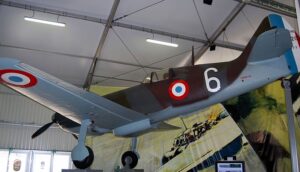Time Period: Pre-WW1
Country of Origin: France
Type: Monoplane, Prototypes and Experimental
Manufacturer: Louis Blériot
Blériot XII Aircraft Overview
The Blériot XII was an early French monoplane aircraft designed and built by the aviation pioneer Louis Blériot in the early 1900s. The aircraft was one of a series of successful Blériot designs that helped establish him as one of the leading figures in the development of aviation during the early years of the 20th century.
The Blériot XII was a two-seater aircraft with a wooden monocoque fuselage, covered with fabric. It had a high wing-mounted above the fuselage, with ailerons and a triangular fin mounted on the top of the fuselage. The aircraft was powered by a 50 horsepower Gnome rotary engine, driving a two-bladed propeller.
The Blériot XII made its first flight in January 1909 and was used for a variety of experimental flights and record attempts over the next few years. In 1911, Blériot flew a modified version of the XII in the Circuit de l’Est race, which was the first air race to take place in France. The aircraft was eventually retired from service in 1912, as newer and more advanced designs began to emerge.
Overall, the Blériot XII was an important aircraft in the early development of aviation, helping to demonstrate the viability of monoplane designs and contributing to the growing interest and investment in aviation during the early years of the 20th century.
Blériot XII Specifications
- Crew: 1
- Capacity: 2
- Length: 9.5 m (31 ft 2 in)
- Wingspan: 10 m (32 ft 10 in)
- Wing area: 22 m2 (240 sq ft)
- Empty weight: 600 kg (1,323 lb)
- Powerplant: 1 × E.N.V., 35 kW (47 hp)
Blériot XII Performance
- Maximum speed: 100 km/h (62 mph, 54 kn).









